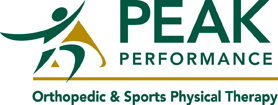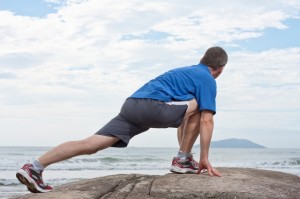How long should I hold my stretches?
Should you stretch before or after exercise?
As with many topics, philosophies and opinions change like our seasons. Depending on who you talk to and what their expertise is you may get different answers. An example of this is our nutritional pyramid, which had been used for years to educate us on proper dietary consumption. Now, it is suggested that we as a society consume too much carbs and should balance more protein and fat in our diets.
When it comes to stretching, there are many opinions out there. Years ago, proper stretching was about gentle sustained holds (static) to be performed before and after activity. Stretching with bouncing or active movement (ballistic) was discouraged and thought to cause injury.
To this date, no one really knows which is the best way to stretch and there certainly isn’t any research to strongly suggest one way is less likely to prevent injuries than another way. There is research that suggests a stretching program may reduce the chance of injury, however, injuries are an inevitable consequence of being active regardless of what preventative measures you take. This doesn’t suggest that you should be sedentary to avoid any risk of injury from exercise. Being sedentary also has its consequences also, more so than being active.
When it comes to exercise, I suggest a brisk low intensity warm-up such as walking and then perform low intensity static stretching of your muscle groups for 20-30 seconds. Usually repeat each muscle group 1-2 times. Then perform some low intensity active ballistic stretching to the muscle groups that are specific to the activity you’re about ready to perform. An example of this would be bending over at your waist in a standing position and touching your hands to the ground and then lightly bouncing your fingers from the ground and work them backwards behind your heels. You should feel small intermittent rapid stretching on the hamstrings. After your activity, you want to take advantage of the warmed muscle and connective tissue in order to stretch more efficiently. Warm tissue stretches easier than cold tissue. Have you ever tried to pull apart a stick of taffy at room temperature as opposed to leaving it in your car on a hot summer day? The warm taffy stretches apart like bubble gum. Similarly, your muscle and connective tissue lengthens or stretches easier when warm. Stretching after activity should be held closer to 40-45 seconds and again repeat each muscle group 1-2 times.
Remember, it is important to stretch before and after activity, spend more of your effort afterwards and be sport specific with your stretching especially with the active ballistic stretching. These principles should help you stay healthy and hopefully reduce your risk of injury.
S. White


Research on stretching is still very inconclusive. Exercise science is a very new science and there is not enough empirical evidence to say anything else about stretching than it may be beneficial in certain situations. It kept me from back surgery. I will quote Ken Griffey Jr. “Have you ever seen a cheetah stretch before chasing down it’s prey?” Just something to think about.